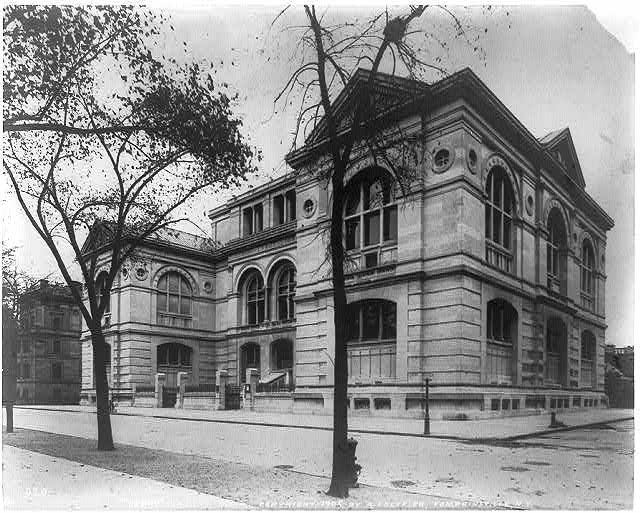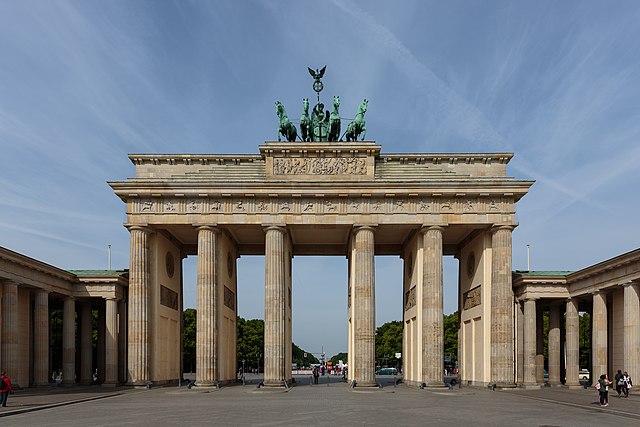Néo-Grec was a Neoclassical Revival style of the mid-to-late 19th century that was popularized in architecture, the decorative arts, and in painting during France's Second Empire, or the reign of Napoleon III (1852–1870). The Néo-Grec vogue took as its starting point the earlier expressions of the Neoclassical style inspired by 18th-century excavations at Pompeii, which resumed in earnest in 1848, and similar excavations at Herculaneum. The style mixed elements of the Graeco-Roman, Pompeian, Adam and Egyptian Revival styles into "a richly eclectic polychrome mélange." "The style enjoyed a vogue in the United States, and had a short-lived impact on interior design in England and elsewhere."
Neo-Grec architecture in the tomb of actor Bogumil Dawison in Dresden, Germany
Bibliothèque Sainte-Geneviève (1843–1850), Paris, Henri Labrouste, architect
Lennox Library (1871–77, demolished 1910), Manhattan, New York City, Richard Morris Hunt, architect
Northern Savings Fund Society (1871–72), Philadelphia, Pennsylvania, Frank Furness, architect
Greek Revival architecture
Greek Revival architecture was a style that began in the middle of the 18th century but which particularly flourished in the late 18th and early 19th centuries, predominantly in northern Europe, the United States, and Canada, as well as in Greece itself following its independence in 1821. It revived many aspects of the forms and styles of ancient Greek architecture, in particular the Greek temple. A product of Hellenism, Greek Revival architecture is looked upon as the last phase in the development of Neoclassical architecture, which was drawn from Roman architecture. The term was first used by Charles Robert Cockerell in a lecture he gave as an architecture professor at the Royal Academy of Arts in London in 1842.
Brandenburg Gate in Berlin, 1791
Northington Grange, an English banker's house of 1804-1817
Yorkshire Museum in York, England, designed by William Wilkins, 1830
Neue Wache in Berlin, 1818








